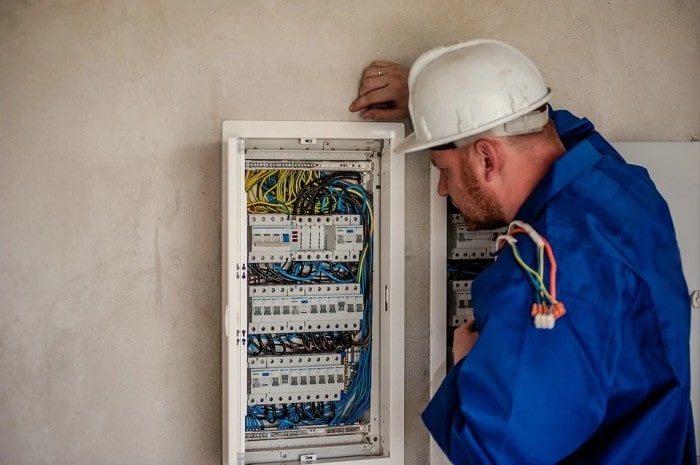
Electricity is something that many of us take for granted. Of course, when natural disasters the electricity can be disconnected for a period, which helps us to appreciate it more.
Of course, that doesn’t change the fact that millions of people across the globe don’t have access to electricity.
Whatever your situation it’s important to have the number of a reputable electrician Sydney close to hand, just in case. You should also have a good understanding of electrical house wiring. This will help you to deal with issues or know when to call the experts.
Radial Circuits
This type of circuit leaves the main breaker box from one breaker. It travels to as many as eight sockets on one line. All sockets are on the same line, one after each other, the wiring simply terminates at the last socket.
The opposite of this is ring mains where the power loops back to the breaker box, but this is not a legal option in Australia.
Wiring Types
Modern wiring is covered in a rubber/plastic coating that protects the wires from touching each other or you.
But, older wiring wasn’t as safe as this. If you notice frayed cables or lead sheathing you need to consider replacing the wiring across your home.
It’s also worth noting that wiring can be placed inside conduit and run along your walls, or it can be concealed in the walls. This is the more attractive option but it does increase the possibility of inadvertently drilling into a cable.
Working with Electricity
You can undertake most electrical work at home yourself, although that doesn’t mean you should. However, there are some jobs that you never touch. This is especially true if you’re dealing with electricity and water at the same time.
You can install low-voltage garden lighting, pond pumps, change light bulbs, rewire the old fuses, replace lights, and install a battery-operated smoke detector. You can fit an electric oven but you can’t connect it if it needs hard-wiring.
Most other jobs will need the help of a professional. If you’re not sure it’s a good idea to leave it to the experts.
Risk of Shorts
Even doing a simple light bulb change can result in you getting a nasty shock. The main risk is old wiring that has frayed and left the internal wires exposed. Electricity can jump across the wires causing shorts and heating up surprisingly fast which increases the risk of a fire.
It doesn’t matter how much stuff you can purchase in your local store, most of it you can’t install. You’ll need to speak to your electrician to ensure everything is fitted according to current laws. If it’s not, then you may have problems selling, or if someone gets electrocuted. That could result in a messy lawsuit
Don’t forget, if you are working on electrics at home you should always shut the power off before you tinker with anything. That will make it less likely that you’ll get an electric shock while working on your electrics.
